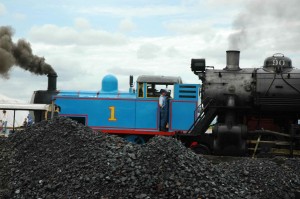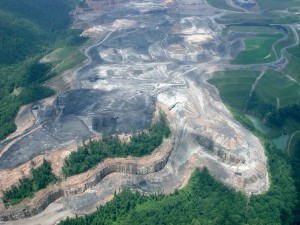Teaching Financial Literacy & Values or NO, The Lego Company is NOT a Charity!
A tweet yesterday about teaching financial literacy through allowances caught my attention, mainly because I’m expecting to start work shortly on a new client project that will engage kids with financial issues (in a green way, of course!… More to come on that when it’s finalized).
As @johnlanza said, allowances are a great idea.
BUT there’s so much more involved than simply handing over $x a week to spend on stuff…Especially if your values are trying to teach kids that we don’t need so much of the stuff that consumes our environmental resources.
A few years ago, when Big Boy was 5, I took a class in allowances at a wonderful local non-profit parenting organization, The Parent Encouragement Program. Their philosophy is simple: start allowances at age 5 to teach saving, spending, and charity, and adjust the allowance over time as your child grows.
We started at age 5 with $3 for spending, $1 for a charity of my son’s choosing, and $1 for savings. Very early on he grasped the concept of “saving” up for large purchases (you guessed it – Legos). It would take him 10 weeks or more to save up for a decent-sized Lego, but he did it. His first charitable donation was to the local Bethesda library.
Two years on, he’s getting $7 a week, with $4.50 for spending, $1.50 for saving, and $1 for charity.
Judging by the number of Lego pieces I trip over in our house, I think he’s got too much spending money. He’s deposited $272 in the bank, and he loves reading the bank statements when they arrive. (I miss the days of the old passbook savings accounts – which made the money somehow seem so much more tangible.)
But it’s the charity thing we’ve had the hardest time working on. Somehow, my complaints about Lego’s exorbitant prices have been misinterpreted. He became convinced that Lego must charge so much because they need the money. Therefore, in his mind, The Lego Company is a charity. And for several weeks, he was bound and determined to donate his charitable savings to The Lego Company. But of course, I wouldn’t allow it!
He’s now finally got the concept of for-profit corporations down pat, and as the note below attests, his charitable contributions will be flowing to Haiti and Chile.
“Dear X,
I am donating $X to give to Haiti and Chile. I hope this money will help the people in Haiti and Chile for food and water.
Sincerely,
XX”
Do you give your kids an allowance? What’s worked for you?
— Lynn
Copyright 2010 OrganicMania
Filed under Parenting | Wordpress Comments (3) |The Hypocrisy of Cancer
“Thank God for those writers, activists, and demonstrators who have the courage to dig around in the manure and expose hypocrisy,” my rector said this morning from the pulpit.
That was it!
I could have blogged about my contempt for pinkwashing, defined here as “the term used to describe the activities of companies and groups that position themselves as leaders in the struggle to eradicate breast cancer while engaging in practices that may be contributing to rising rates of the disease.” Or I could have asked why the many environmental links to cancer are not more widely acknowledged in our society.
But then again, why did I want to risk being pegged yet again as just one of those “hysterical Mommy bloggers?”
Sadly, many people shrug off cancer, perhaps as a means of coping with the fear of this horrible disease. “Everything causes cancer!,” they’ll joke. “We can’t live in bubble wrap,” they’ll say.
It doesn’t have to be this way. If we would only clean up our environment, ban known carcinogens from use in our personal care products and household cleansers, and prevent exterminators from spraying pesticides inside homes, we’d be well on our way to reducing and preventing the increasing numbers of breast cancers.
Don’t just take it from me. Listen to what these experts say about environmental linkages to cancer. And please check out the round-up of posts on this topic from the other members of the Green Moms Carnival. Among them are some experts as well. We’re posting Monday over at Nature Moms.
- The Breast Cancer Fund: “No more than 10 percent of breast cancers are genetic, and science points to toxic chemicals and radiation as factors in the sharp rise of breast cancer incidence.”
- Dr. Devra Lee Davis and the Environmental Health Trust. Dr. Davis says, “We should…find safer substitutes for the things we use every day that appear to be toxic, according to their labels…For nearly a century, the following things have been understood to cause cancer: tobacco, benzene, asbestos, tars, sunlight, hormones, and radiation.”
To be kept informed of the latest developments in the fight against cancer-causing environmental contaminants, follow these groups:
- Healthy Child, Healthy World
- Campaign for Safe Cosmetics
- Environmental Working Group
- Safer Chemicals, Healthy Families
- Breast Cancer Action
— Lynn
Copyright OrganicMania 2010
Filed under Cancer | Wordpress Comments (11) |The Green Moms Take on Environmental Links to Cancer
Next Monday the Green Moms Carnival members will host our 26th carnival. We’ll tackle environmental links (or causes, depending on your perspective) to cancer. I’ll admit I’ve become radicalized about this subject. Despite all the talking about “finding a cure for cancer,” we actually are a lot closer to knowing what causes many cancers than the mainstream public believes. If we cleaned up our environment and took the toxins out of the products we use everyday, I believe we’d find that our cancer rates would dramatically decrease.
.

My very first post here at OrganicMania was about cancer, and that was before I was aware of the many environmental links to cancer. Cancer is a subject that’s close to my heart, having two parents who battled cancer – my mother successfully, and my father unsuccessfully. I also lost my mother-in-law to the disease, and many other cousins, aunts and uncles.
Cancer is a subject I’ve wanted to revisit, and that’s why I asked Tiffany of Nature Moms if she’d host this carnival. Most of us know Tiffany as one of the trailblazers in “green mom” blogging. But Tiffany is also a young woman who battled cancer in her 20s. Her experience caused her to examine the environmental causes of cancer. I couldn’t think of a better host for this carnival.
If you’d like to contribute a post to the carnival, it’s not too late. Just include a link to Nature Moms, to the home page of the Green Moms Carnival, and email your submission to greenmomscarnival at gmail dot com by Sunday morning.
We’re going to be talking pinkwashing, carcinogens, plastics, coal, household cleansers, you name it….we’ll put it on the line.
Join us. Monday at Nature Moms.
— Lynn
Copyright OrganicMania 2010
Filed under Uncategorized | Wordpress Comments (2) |No More Baby BPA in Maryland: 46 to 0
Talk about a rout! The BPA vote sailed through the Maryland Senate this morning, on a vote of 46 to 0. Wow.
You can read more about it in this piece from the Baltimore Sun.
Congrats to everyone who has worked so hard to get this legislation passed!
— Lynn
Filed under Uncategorized | Wordpress Comment (1) |BPA for Babies? Say No in Maryland: NOW!
If you’re been reading my blog for a while, you know I’ve written about the debate over BPA a lot over the past two years – like here, there, here and there, for starters! I’ve talked about BPA in The Washington Post and on many other great green blogs.
Now it’s time to do something.
We now know that BPA traces are found not only in adult bodies, but in the blood of newborns, thanks to “Body Burden” tests conducted by The Environmental Working Group.
But the fact is, to avoid BPA in Maryland, you need to be savvy. You need to be a Mom who is educated about chemicals and the risks they pose, and one who is willing to seek out BPA-free products, which typically are more expensive than products containing BPA.
I think it’s a social justice issue. Why should only educated, affluent women be able to choose BPA-free products for their kids?
We can change this in Maryland. This week debate is expected to start on the BPA-Free Babies and Childrens Act. Let’s have Maryland join Canada, Minnesota and Connecticut in banning BPA in babies and childrens products.
Let’s stop experimenting on the weakest in our society – our babies and children.
What can you do? Click here to send an email to your local delegate. It’s fast and easy.
What else? Tell your friends. Because not everyone knows about BPA, which hundreds of studies have linked to serious health problems, including obesity, heart disease, liver abnormalities, impaired brain development, cancer, and a number of reproductive problems.
— Lynn
Copyright 2010 OrganicMania
Filed under Uncategorized | Wordpress Comments (5) |
Roses and Thorns
Say what you will about President Obama. He’s too liberal. He’s not liberal enough. He needs to move to the center. He’s doing just fine. Whatever. But here’s what we can all agree on: his family is cute.
So when I saw a Parade cover story about the adorable Obamas, of course I read it. It was one of those “soft” pieces for which the White House press office was so roundly criticized, right around the time of the Inauguration.
What struck me about the article was a simple story about their family dinners. Each person at the table takes turns sharing the best thing that happened to them that day (the rose) and the worst thing (the thorn). The joke was that Obama’s daughter Malia thought her dad had a “thorny job” as president.

Source: Freefoto.com
We adopted the Roses and Thorns tradition a year ago, and it’s been a blessing for our family. It is such a low pressure way to find out what’s going on in my second grader’s life. Our 3-year-old doesn’t understand the concept of thorns yet, but he does eagerly share his roses.
Apparently The First Lady has been telling the Rose and Thorns story again as part of her new anti-obesity campaign. As this great post explains, Roses and Thorns not only helps families connect, it encourages the proper expression of emotion – so that we talk about our feelings rather than eat them away…
Rose and Thorns…have you tried it yet?
— Lynn
Copyright OrganicMania 2010
Filed under Eco-friendly toys, Food, Parenting, Pregnancy | Wordpress Comments (4) |Green Valentines for Your Little (and Big) Kids
With all the focus on “Snowmageddon” “Snowzilla” or whatever you decided to call the two storms that hit the DC area this week, I actually forgot Valentine’s Day is coming up…!
Heck, between snow days (6), illness (2 days) and holidays (2), my kids will have missed 10 out of 11 consecutive school days! So I think I can be forgiven for forgetting that those darling little Valentines need to be dutifully addressed to each classmate and brought into school next week!
But when I checked the school listserv today, I realized apparently I was the only one who had forgotten…a bunch of other parents had actually spent constructive time during the snow storms making Valentines cards with their kids!
What a great idea….and it’s not too late…
You can get fancy if you want, but in earlier years, when I’ve had my act together (no snow), I got rave reviews from the preschool teachers with just the simplest of Valentines. Before my son could even cut out a heart shaped valentine, he cut circles, squares, oblong odd shapes – whatever he could muster – from red construction paper. Then I either wrote his name on each one or he stuck a sticker with his name on each Valentine.
The teachers and kids loved the home made Valentines. I loved doing a simple, easy craft with my child from materials that we already had at home. What’s more, I didn’t waste gas, consume unnecessary plastic, or have to spend bucks on silly Valentine’s cards.
C’mon…join me – it’s not too late – we can still get those Valentines cards made! And making – rather than buying – is just one simple way to show love to Mother Earth this Valentine’s Day!
Does your family have a Valentines tradition? Leave a comment and share!
— Lynn
Copyright OrganicMania 2010
Filed under Holidays | Wordpress Comment (0) |Coal: Can’t We Do Better?
Lisa was right when she said this month’s Green Moms Carnival topic would challenge us. Coal. It’s one of those things most of us take for granted. We don’t really think about coal – where it comes from, what it does, why we depend on it. Oh sure, we think about climate change. We blog about climate change. But climate change is a topic that’s front and center in the media and the blogosphere. We think about the ramifications of climate change: rising sea levels, economic destabilization, melting polar ice caps and so on…
When I stopped and thought about it, I realized I knew very little about coal besides the fact that it accounted for most of our energy use in this country, was a main contributor to global warming, and made up a very dangerous life style for the coal miners in West Virginia, Pennsylvania, Ohio, and elsewhere. Oh, and when I was exposed to it for the first time via our family trip to see Thomas the Tank Engine, I coughed and coughed and coughed…


So I went straight to the US Department of Energy website, where I learned:
Coal is one of the true measures of the energy strength of the United States. One quarter of the world’s coal reserves are found within the United States, and the energy content of the nation’s coal resources exceeds that of all the world’s known recoverable oil.
The text pretty quickly jumped into an explanation of all that the DoE is doing to try to counter-balance the negative impacts of coal. “Innovative, low-cost environmental compliance technologies and efficiency-boosting innovations are being developed by the Energy Department’s Fossil Energy research program.
To tap the full potential of the nation’s enormous coal supplies, the U.S. Department of Energy’s Office of Fossil Energy is working with the private sector to develop innovative technologies for an emission-free coal plant of the future.
This research and development program is pioneering more effective pollution controls for existing coal-fired power plants and an array of new technologies that would eliminate air and water pollutants from the next generation of power plants. Research is also underway to capture the greenhouse gases emitted by coal plants and prevent them from entering the atmosphere.”
Let’s face it. Coal is dirty. “Clean coal” is a dream, not yet proven and with unforeseen consequences for our groundwater supplies.
More people have probably died from coal – from the toxic pollution it spews into our air and our water – than from both world wars and the 1918 influenza combined.
Coal is destroying our landscape too. Mountain top removal means exactly what it sounds like. It’s horrible. And it’s irreversible.

Can’t we do better than coal?
An entirely new, clean green economy is looking for investment, looking for opportunities to prove what it can do to make our nation more energy-independent and cleaner and greener. Solar. Wind. Hydrothermal. Even, dare I say, nuclear and natural gas – these are the way of the future.
Check out the other posts at the Green Moms Carnival on Coal, hosted today by Retro Housewife Goes Green.
— Lynn
Copyright OrganicMania 2010
Filed under global warming | Wordpress Comment (1) |It’s International Ice Cream for Breakfast Day on Saturday!

Here in the DC region, people are counting on being snowed in tomorrow as we wake to more than two feet of snow. But if you’ve got any ice cream in your freezer, you can call over to your closest neighbors (who are sure to be home!) and throw an Ice Cream for Breakfast Day party!
Held the first Saturday in February, Ice Cream for Breakfast Day is exactly what it sounds like. A great excuse for a party! What began as a small gathering in upstate New York is now a worldwide event, but still very much under-the-radar!
Here’s more on the story from the “official” Ice Cream for Breakfast Day website.
Once upon a time there was a little girl named Ruth and a little boy named Joe. Ruth and Joe grew up in the
back of beyond in New York state where it was very very cold. Every winter between New Year’s Eve and
Passover, life in up-state New York got extremely boring, so their parents invented a holiday to brighten
up the dreary days of winter. It was called Ice Cream For Breakfast Day. This was a wonderful holiday for
children and parents alike because to celebrate you had to eat ice cream for breakfast on the first Saturday in
February.
Well, Ruth and Joe grew up and went away to a university. They made many friends and taught them all
about Ice Cream For Breakfast Day. After college Ruth had a roommate named Barry to whom she also told
about this tradition. Many years later, Barry met Itzah C. Kret in Washington, D.C. and converted him into an
Ice Cream For Breakfast Day observer.
Nobody has kept precise track but through word of mouth ICFBD has been celebrated in many homes, states
and countries all over the world. Some people give parties with musical instruments, others simply
celebrate with family members. There is no right or wrong so long as you follow the 3 plus 1 simple Ice
Cream for Breakfast Day Rules
(1) Eat ice cream
(2) for breakfast
(3) on the first Saturday in February
(4) spread the word
The rest is up to you!
As for me, I’m fortunate to be invited to the famous Barry’s party! But I’ve got to trek through all the snow, which may come up to Boo’s shoulders….so we’ll see if we make it. Actually, nothing keeps me from my ice cream, diet or not (at least not on Ice Cream for Breakfast Day).
Let me know if you spring for Ice Cream for Breakfast Day! (And yes, make it organic!)
Have fun!
– Lynn
Copyright OrganicMania 2010
Filed under Bethesda, Food, Holidays | Wordpress Comments (3) |The Green Moms Get Dirty with Coal. It’s the Next Carnival!
So what’s up with the Green Moms? Recovered from doing our very best to celebrate the holidays with Greener Traditions and ring in the New Year with Green Resolutions, we’re setting our sights on coal. Sure, we’ve blogged about climate change before. We kicked off the carnival back in August ’08 with this carnival about climate change, before tackling it again and yet again.
But this time we’re getting down and dirty – we’ll be talking about coal in our next carnival on February 8th. Oh, maybe some of us will cover the promise of “clean coal,” but it’s still dirty.

For most of us, coal is an abstraction. Many of the @GreenMoms live in or near big cities like San Francisco, Minneapolis, New York, Washington, Los Angeles, Portland, and elsewhere. But for some of us, coal is a real life, every day presence, like it is for Lisa of Retro Housewife Goes Green, who hails from Oklahoma and who proposed the topic of this month’s carnival. She’ll be hosting the carnival on February 8th.
As Lisa explains, “Coal is a big issue to me in part because a year or so ago I learned we have a lot of coal ming a few hours east of me that is killing a lot of people, also even closer to me I have heard they are mining coal now but I can’t get my hands on all the info. But if they keep at it one of the most beautiful parts of this state will be gone and it is also where we have herds of wild bison that will be harmed and my town and other towns around here will have water shortages. That is why this is such an important topic for me, but I know this is kind of a big topic and can be hard for some bloggers so don’t feel like you have to do it.”
Well, let’s show Lisa we stand with her and we can take it on! If you’d like to contribute to the carnival, please send your post on coal to greenmomscarnival@gmail.com. We can’t promise all the submissions will be included, but we’ll try! Please remember to include in your post a link back to Lisa’s blog, Retro Housewife Goes Green and to the Green Moms Carnival home page.
— Lynn
Copyright 2010 OrganicMania

 My StumbleUpon Page
My StumbleUpon Page



